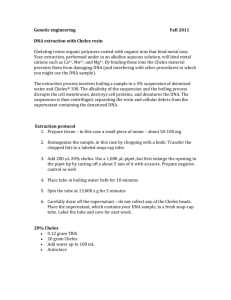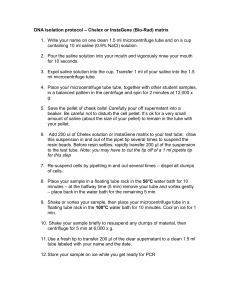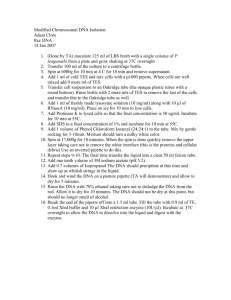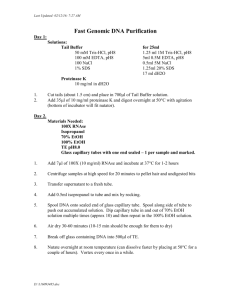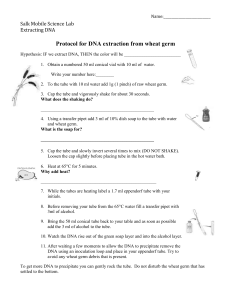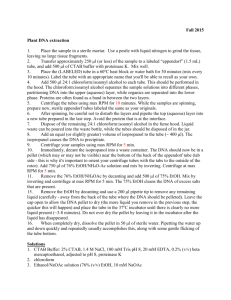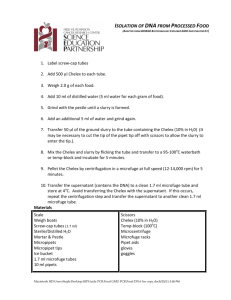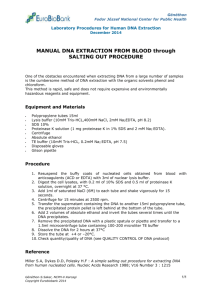extraction of dna from cheek cells
advertisement
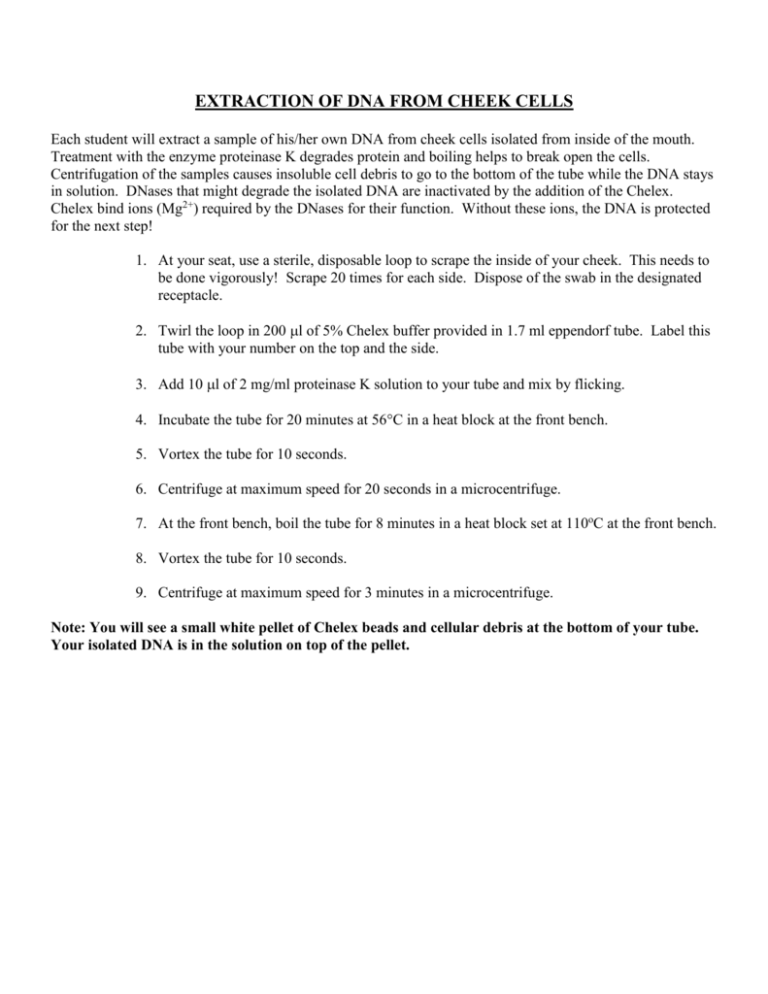
EXTRACTION OF DNA FROM CHEEK CELLS Each student will extract a sample of his/her own DNA from cheek cells isolated from inside of the mouth. Treatment with the enzyme proteinase K degrades protein and boiling helps to break open the cells. Centrifugation of the samples causes insoluble cell debris to go to the bottom of the tube while the DNA stays in solution. DNases that might degrade the isolated DNA are inactivated by the addition of the Chelex. Chelex bind ions (Mg2+) required by the DNases for their function. Without these ions, the DNA is protected for the next step! 1. At your seat, use a sterile, disposable loop to scrape the inside of your cheek. This needs to be done vigorously! Scrape 20 times for each side. Dispose of the swab in the designated receptacle. 2. Twirl the loop in 200 l of 5% Chelex buffer provided in 1.7 ml eppendorf tube. Label this tube with your number on the top and the side. 3. Add 10 l of 2 mg/ml proteinase K solution to your tube and mix by flicking. 4. Incubate the tube for 20 minutes at 56C in a heat block at the front bench. 5. Vortex the tube for 10 seconds. 6. Centrifuge at maximum speed for 20 seconds in a microcentrifuge. 7. At the front bench, boil the tube for 8 minutes in a heat block set at 110oC at the front bench. 8. Vortex the tube for 10 seconds. 9. Centrifuge at maximum speed for 3 minutes in a microcentrifuge. Note: You will see a small white pellet of Chelex beads and cellular debris at the bottom of your tube. Your isolated DNA is in the solution on top of the pellet.
